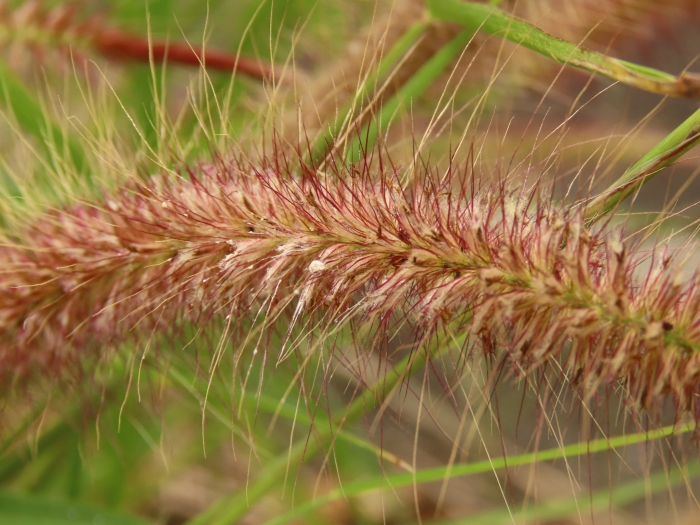Mission Grass
(Cenchrus polystachios)
Mission Grass (Cenchrus polystachios)
/
/

chiuluan
CC BY 4.0
Image By:
chiuluan
Recorded By:
Copyright:
CC BY 4.0
Copyright Notice:
Photo by: chiuluan | License Type: CC BY 4.0 | License URL: http://creativecommons.org/licenses/by/4.0/ | Rights Holder: chiuluan | Publisher: iNaturalist | Date Created: 2021-02-21T14:42:32-08:00 |













Estimated Native Range
Summary
Cenchrus polystachios, commonly known as Mission Grass, is a deciduous perennial grass native to tropical and subtropical regions in Africa. It typically grows to a height of 2-3 feet (0.6-0.9 meters) and a width of 1-2 feet (0.3-0.6 meters). This species forms dense clumps and has a feathery inflorescence that can add texture to garden settings. It is often found in open grasslands, roadsides, and disturbed areas, where it can become quite competitive.
Mission Grass is known for its ability to adapt to a variety of conditions and is often used for erosion control due to its dense growth habit. It is also utilized in ornamental plantings for its attractive seed heads, which persist into the winter months. In cultivation, it requires full sun exposure and can tolerate a range of soil types, provided they have medium drainage. While it is drought-tolerant once established, it performs best with regular watering. Gardeners should be cautious, as Cenchrus polystachios is known to be invasive in some regions, outcompeting native flora and altering ecosystems. It is important to consult local regulations and consider native alternatives before planting.CC BY-SA 4.0
Mission Grass is known for its ability to adapt to a variety of conditions and is often used for erosion control due to its dense growth habit. It is also utilized in ornamental plantings for its attractive seed heads, which persist into the winter months. In cultivation, it requires full sun exposure and can tolerate a range of soil types, provided they have medium drainage. While it is drought-tolerant once established, it performs best with regular watering. Gardeners should be cautious, as Cenchrus polystachios is known to be invasive in some regions, outcompeting native flora and altering ecosystems. It is important to consult local regulations and consider native alternatives before planting.CC BY-SA 4.0
Plant Description
- Plant Type: Grass
- Height: 2-3 feet
- Width: 1-2 feet
- Growth Rate: Moderate
- Flower Color: N/A
- Flowering Season: Summer, Fall
- Leaf Retention: Deciduous
Growth Requirements
- Sun: Full Sun
- Water: Medium
- Drainage: Medium
Common Uses
Bird Garden, Deer Resistant, Low Maintenance
Natural Habitat
native to tropical and subtropical regions in Africa
Other Names
Common Names: Blue Buffel Grass, Elephant Grass, Feather Pennisetum, Feathery Pennisetum, Missiongrass, Thin Napier Grass, West Indian Pennisetum, Chinese Fountaingrass
Scientific Names: , Pennisetum polystachion, Cenchrus polystachios, Pennisetum polystachion subsp. polystachion, Panicum polystachion, Gymnothrix geniculata, Gymnotrix polystachya, Panicum fuscescens, Pennisetum reversum,
GBIF Accepted Name: Cenchrus polystachios (L.) Morrone